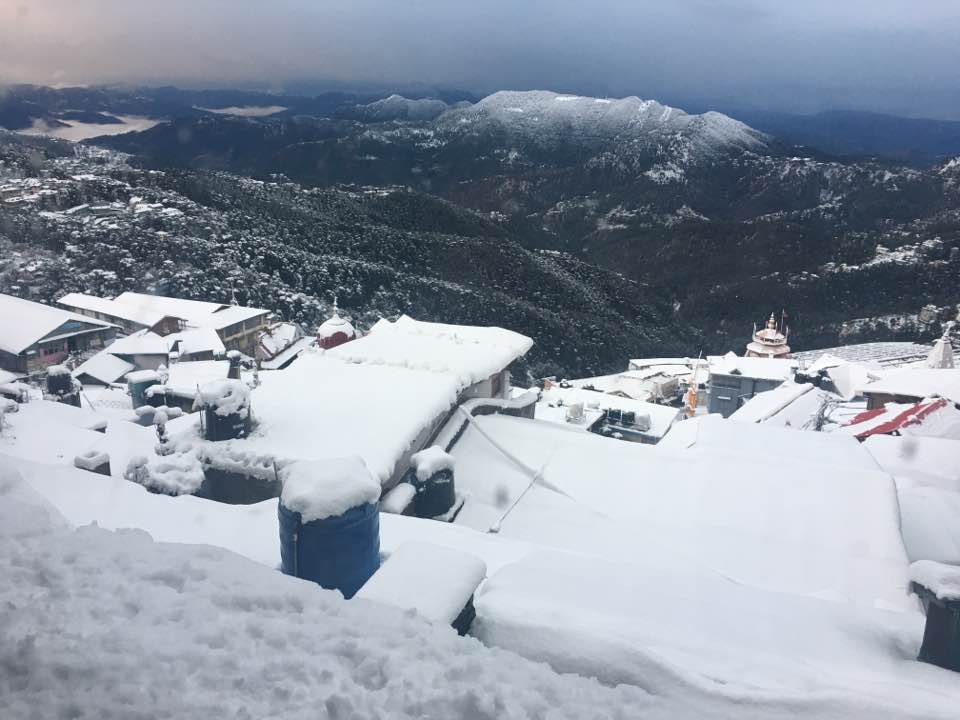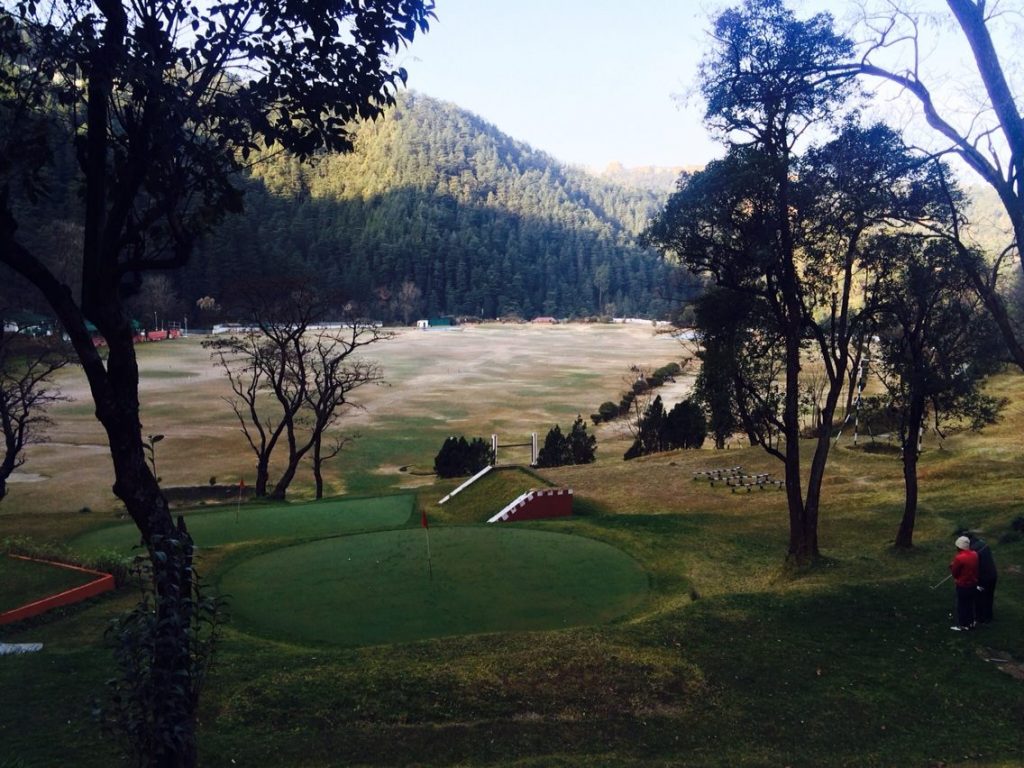It really is astonishing (but not surprising) that fifteen years after the 17 green belts in Shimla were notified as no-construction zones, their necessity and legality are still being debated. It appears that the state government, hostage as ever to populism and pressure, would like to denotify them but doesn’t quite know how to. They probably are now safe since the Green Tribunal has taken cognizance of the matter, although one was puzzled by the reported view of its Expert Committee that plot owners in the green belts should be allowed to make some constructions on their plots as a matter of equity: the reasoning being that they cannot be treated differently from those who were allowed to make constructions before 2000. This is completely flawed logic and betrays both, a misunderstanding of the law and an ignorance of the pusillanimous and myopic governments we have been blessed with, which have presided over the destruction of Shimla regardless of their political colour (which has generally been lily-livered yellow).

The only greenery which remains in Shimla is the green belt comprising about 400 hectares. Every spur emanating from the main ridge has been systematically denuded – New Shimla, Kasumpti, Knollswood, Strawberry Hill, Nabha, Kelston, Longwood. Encroachments are sought to be regularised every five years, roads under all kinds of pretexts are bulldozed through forests. Past experience has proved that allowing “partial” or “limited” construction in the green areas is not a viable option, for a number of reasons. First, even limited building activity causes huge damage by development of access roads, laying of pipelines, electricity and sewer lines, carriage of construction material, etc. Secondly, there is every likelihood of encroachments and deliberate killing of trees in order to open up spaces and get more sunlight. The twenty thousand irregular structures that have come up in and around Shimla in the last decade are proof of this, if indeed any proof was needed. Thirdly, the agencies of the government are incapable of ensuring that land use or building restrictions are complied with: this has been amply demonstrated by the likes of Mr. J.P.Gupta (of Jagson Airlines fame) and Radha Swami Satsang who have built huge edifices and monstrous retaining walls in the green belts with impunity. Even more disheartening is a report I read recently of a “guest house” being constructed in Oakover (the CM’s official residence). I sincerely hope this report is not true because this property enjoys a double layer of protection – not only is it in the green belt, it also falls in the Heritage Zone!

There can be only one possible conclusion from all this empirical data – the government is incapable of regulating or monitoring limited construction in the green belt (as has been demanded by the plot owners and recommended by the Expert Committee), and the only solution is a COMPLETE BAN on any kind of construction. I fervently hope the Green Tribunal will so order, in the interest of the larger public good, though it is a bit harsh on those who own land in the area. There is, however, no infringement of their rights because the state has the right to determine land use in the larger interest of urban planning and protection of the environment.
These plot owners numbering about 61 own a total of about 30 hectares of land in the green area and deserve to be compensated. It is shocking that in 15 years the government has not been able to come up with a package for them. Its repeated pleas that it has no money is not only an untruth, it also betrays complete lack of innovative thinking and planning. Here is a road map for the government:
- Government should purchase the land through a negotiated deal, not compulsory acquisition. Acquisition is not a good idea, primarily because it will mean valuing the lands at current market prices of similar categories of land in the area. On paper the green belt plots may have a high price but in reality they are worth zero since no construction is permitted on them and therefore there will be no takers for them. Hence the negotiation rather than the acquisition route. However, in order to be fair to the owners of these plots, for negotiation purposes their value may be restricted/frozen at 2000 rates (the date of notification of the green belts).
- About 400 bighas (30 ha) would need to be paid for, if all the owners agree. The value would be approximately Rupees 100 crores. This can be paid in a package consisting of the following sub-sets:
- Rs. 50 crores can be paid in cash. It should not be too difficult for the government to arrange the funds, considering it has just been announced that it will pay Rs. 28 crores to acquire Bantony castle, a decision which serves no public purpose though its a windfall for the descendants of the Sirmour royal family. (If the government has the money to splurge on privately held architectural heritage it can certainly find the funds to preserve the even more important natural heritage of the town. Shimla can exist without some of its old buildings (most have already been burnt down) but it will be just one large rock without its trees and greenery). Funds can also be mobilised by ear-marking 50% percent of the green tax being imposed by the Municipal Corporation (on vehicles entering Shimla) for this purpose. A temporary green cess should be levied on Luxury Tax and Property Tax. After all, if the residents of the town and the tourists are attracted by its natural environment and green cover they should not mind being asked to pay for its preservation.
- Provide an HIG flat to each plot owner in any SDA or Housing Board development under construction in any part of the state, as per the owner’s preference. This has already been announced by the government.
- Issue TDRs (Transferable Development Rights) to each plot owner. TDRs are an accepted instrument of urban planning for incentivising/compensating developers of social housing, slum improvements and land owners subjected to building embargoes. Such persons are issued TDRs which entitle them to higher FAR and FSI in other, permissible areas so as to compensate them for their loss. The TDR in effect becomes a bankable instrument which can even be sold or traded. It is used extensively in Mumbai.
The plot owners can be offered a negotiated package on the above lines. It is not unreasonable given the circumstances and most would agree to accept it as otherwise the current value of their plots is practically zero. Those who reject it can continue to fight it out in the courts.
It is high time the state govt. applied its mind to this lingering issue. It should give up its ambivalent attitude, take a pro conservationist stand, refrain from passing the buck to the Green Tribunal, and offer a just and equitable deal to the plot owners who have been in a limbo for the last fifteen years. For once, it should forsake populism- not that the couple of hundred votes involved here will make much of a difference to its declining fortunes, from what I hear.
| The author retired from the IAS in December 2010. A keen environmentalist and trekker he has published a book on high altitude trekking in the Himachal Himalayas: THE TRAILS LESS TRAVELLED.
His second book- SPECTRE OF CHOOR DHAR is a collection of short stories based in Himachal and was published in July 2019. His third book was released in August 2020: POLYTICKS, DEMOCKRAZY AND MUMBO JUMBO is a compilation of satirical and humorous articles on the state of our nation. His fourth book was published on 6th July 2021. Titled INDIA: THE WASTED YEARS , the book is a chronicle of missed opportunities in the last nine years. Shukla’s fifth book – THE DEPUTY COMMISSIONER’S DOG AND OTHER COLLEAGUES- was released on 12th September 2023. It portrays the lighter side of life in the IAS and in Himachal. He writes for various publications and websites on the environment, governance and social issues. He divides his time between Delhi and his cottage in a small village above Shimla. He blogs at http://avayshukla.blogspot.in/ |




It is very painful to see every tall, old and beautiful deodar tree destroying in the name of construction of private and govt building.Need of Chipko andolan by Shimalites. Its high time to intervene and stop constructing huge parking,rope ways and implementing stupid ideas of development.SAVE SHIMLA PLEASE.
Thought provoking sir…..worth pondering upon….for the sake of Our own Shimla
While the loss of green cover in Shimla is primarily and cumulatively due to the ‘political economy’ of urbanising hill stations, with all spineless principal players, be it corporators, bureaucrats and ministers with their boneless fingers in the expanding PIE, the consequences were foregone. But what is also responsible, is the inability to regenerate / replant successfully the increasingly degraded forests within and around the town with imagination. Flourishing Urban forestry around the world is not unknown, but we choose to be saddled with forestry practices and mindsets at least a hundred years old. Legalising unauthorised constructions and so forth and now allowing building up green belts, is to be expected in the absence of the idea of planning and foresight. And of course the lack of moral capacity to govern.
I know this is going to hurt, but I can’t help saying it ….. what were the former bureaucrat and technocrat doing while they were in service? Why is it that they start raising questions and lambasting the government and the system only after they retire?
It may surprise ( and perhaps disappoint) you, Mr. Mad, to learn that many of us ” raised questions”, and also attempted to supply answers, while in service. We could not do this publicly, of course, because of service regulations. As responsible citizens we continue to do so after retirement too. And yes, we don’t hide behind pseudonyms.